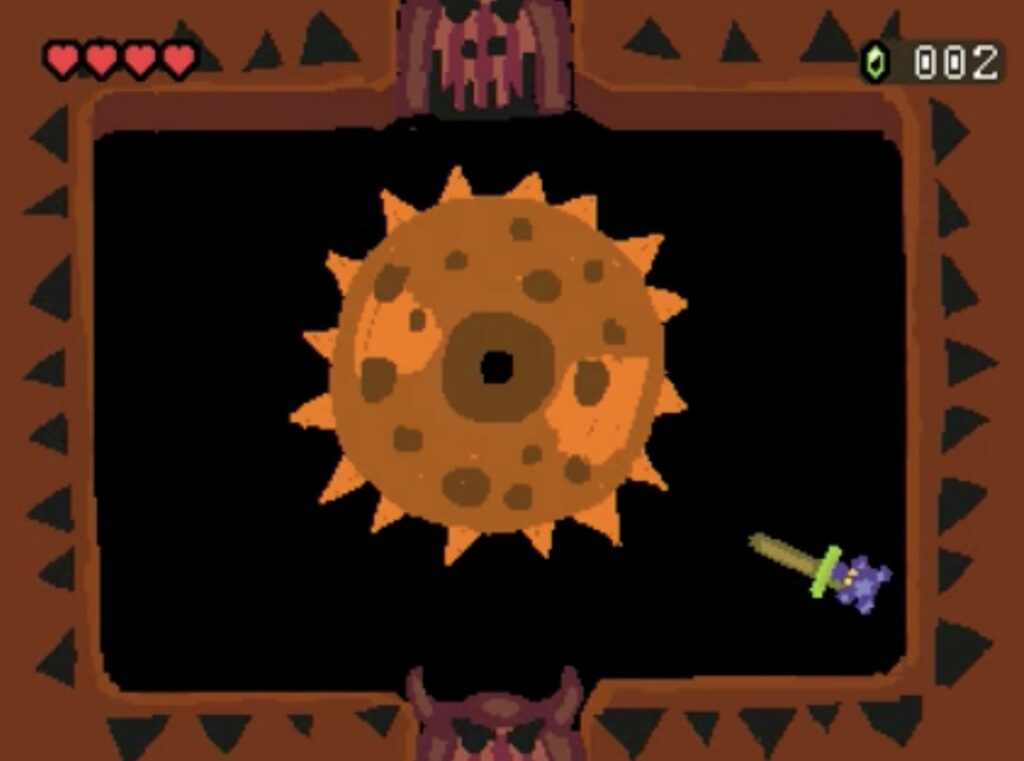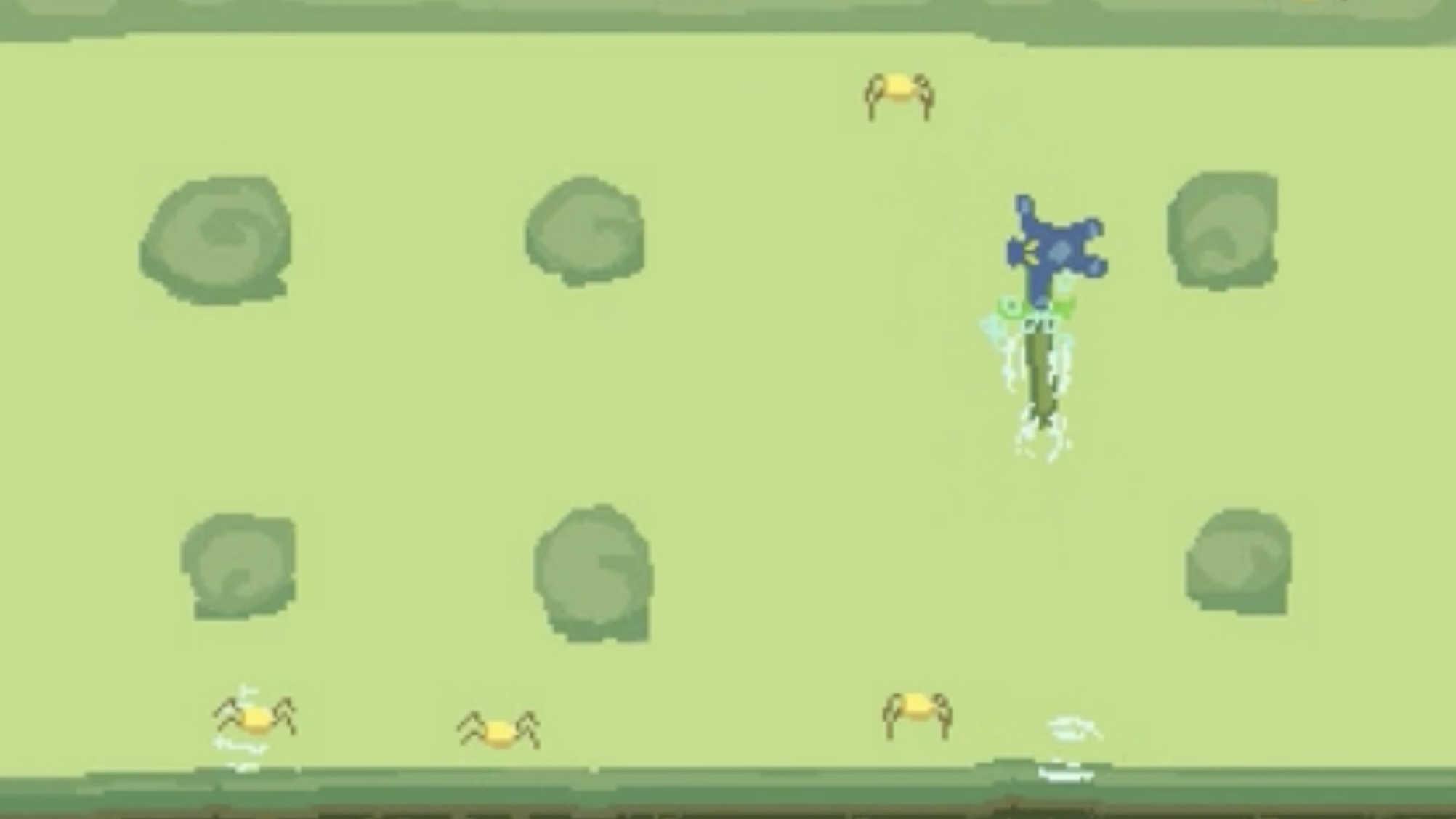This piece originally appeared at Fanbyte in March 2022.
There’s something about the early Zelda games that captured the imagination of anyone who encountered them as a kid. More than many other games of the 80s and early 90s, they presented a wide world full of possibility and adventure — so it’s no surprise that many of those players, now adults, have gone on to produce works inspired by these titles. Tunic is the most recent, high-profile example of this phenomenon, and it got me thinking about another Zelda-inspired game I’d played nearly a decade ago. I couldn’t even remember the name at first — I had to go digging through vague search results, finally getting my answer from Twitter. It was called The Alone Sword.
Released in 2011 by Calvin French, The Alone Sword is set 40,000 years in the future, when unimaginable aliens arrive on Earth to discover the ruins of humanity. They piece together a record of humanity’s dreams, and according to their religious custom, build a monument to a “shared dream,” something they do not understand. In other words, they build a monument to humanity based on fragments of The Legend of Zelda.

You play as one of these aliens, a little aquatic creature who swims though reconstructed areas of the original Zelda, encountering aliens and structures based on those from that game. It’s kind of like a much, much less upsetting Mastaba Snoopy. The game departs from the usual Zelda mechanics by emphasizing the liquid nature of the world — you drag your sword behind you, and swinging it sends you floating backwards, for example. You collect items that resemble but don’t quite match up with their originals, and you converse with creatures who seem not to know what their purpose in reenacting these sequences even is.
The odd gameplay of The Alone Sword works with the narrative to create the sense that something isn’t quite right with the entire experience. It makes the familiar alien, letting players imagine what an encounter with the creative detritus of humanity might be like from an outside perspective. I never finished the game back when I played it, but it felt expansive and strange in the same way that those old Zelda games did, and which games attempting to create that kind of atmosphere rarely achieve.
And that brings me to the sad, ironic part of the story — you can’t play The Alone Sword anymore. The game was developed in Flash, and as such became one of the countless casualties of Adobe blocking its use in early 2021. You might be able to play it using some of the workarounds developed by dedicated archivists, but for most people it may as well not exist anymore. That puts us in a similar position with The Alone Sword as the aliens in the game attempting to understand The Legend of Zelda.
It’s poetic, almost, that a work about lost things should become lost itself. But such is the nature of human creation. Yes, efforts to preserve games and their history are important. But one day, all of the silicon, all of the code, all of the pixels will be as gone as everything else, and only ruins will be left for whatever might come after us to sift through.

Leave a Reply